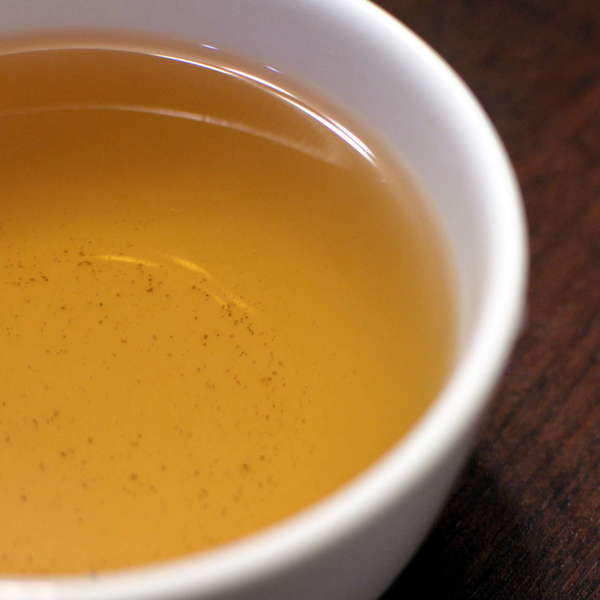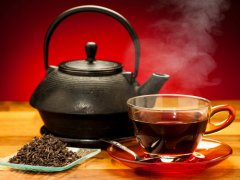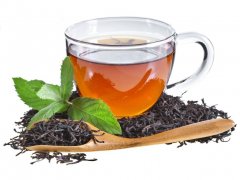What is the taste of authentic Darjeeling spring picking black tea? How many times a year does Darjeeling black tea in India be picked?
About Darjeeling Spring picking Black Tea Darjeeling is sometimes called "champagne in tea" and has long been a popular staple food in the tea world. Produced in the high altitude region of Darjeeling, India, Darjeeling Tea is a kind of exquisite black tea with floral fragrance and delicate character. Darjeeling's unique growth environment, coupled with centuries of continuous improvement of planting and harvesting techniques, has created its unique flavor and excellent quality. Most Darjeeling black teas are produced when they bloom for the second time from June to August. However, Darjeeling's first flowers are harvested in the spring and are rarer and more popular than the more common ones. Since this is the first tea harvest in a year, the output of the first brewing tea is usually small and will soon be sold out because of the limited supply. Darjeeling spring-picked black tea is usually lighter than summer-picked black tea, with less oxidizing leaves and bright green and silver spots. They are golden in color, crisp in taste and astringent in bite. Darjeeling cattle are usually harvested from March to May, depending on the weather conditions in the area where they grow. Because of its unique characteristics and relatively short season, Chuchong tea is usually some of the freshest teas. It is only a few months after picking tea trees that it is brewed into pots of tea all over the world! First wash Darjeeling caffeine content Darjeeling spring tea coffee contains the right amount of caffeine, each cup of coffee contains less than half the caffeine of coffee. Darjeeling's caffeine content is affected by several factors, including: harvest time-tea harvested in early spring has higher caffeine content. Darjeeling Tea picked it from the first leaf of the tea tree in early spring. Tea varieties-although all teas are made from the same tea tree, there are two main varieties. Darjeeling black tea is a variety of camellia (camellia sinensis var. Sinensis), while most other Indian black teas are produced by the camellia variety assamica, which is native to India. Camellia tends to have a low caffeine content. Leaf size-our Darjeeling spring picking black tea is an excellent quality of full-leaf tea. Whole-leaf tea tends to have a slightly lower caffeine content than broken-leaf tea or fan-shaped tea. Water temperature-like other black teas, Darjeeling black tea is first brewed in boiling water (about 212 degrees). The hotter the water, the more caffeine in the tea. Soak time-We recommend soaking in Darjeeling for two to four minutes a day. The shorter the brewing time, the lower the caffeine content in the brewed tea.

Darjeeling Spring picking Black Tea brewing Guide We recommend using a teapot, brewer or filter to brew this kind of tea. These brewing methods can make the tea fully expand, thus making a cup of tea more delicious. To prepare Darjeeling spring picking black tea, use about one teaspoon of tea for every six ounces of water. Heat the water to boil, then add the tea for 2-4 minutes. In order to better enjoy the unique flavor of this high-quality tea, we recommend that you drink Darjeeling Tea first without adding any milk or sweetener.
Important Notice :
前街咖啡 FrontStreet Coffee has moved to new addredd:
FrontStreet Coffee Address: 315,Donghua East Road,GuangZhou
Tel:020 38364473
- Prev

Where is the most famous black tea produced in japan? What kind of tea is Wakoucha black tea?
About Japanese black tea and mouthful tea is a kind of black tea made in Japan. Although Japan is most famous for green tea, such as fried tea and Yulu tea, Japan also produces some special black tea every year. Compared with typical black tea produced in China and India, Wakoucha's tea is lighter and milder, with red tones and pleasant
- Next

How did Earl Grey get the smell of red tea and orange? Earl Grey Tea's secret recipe for tea blending
About Earl Grey Black Tea Earl Grey Tea is a kind of tea flavored with bergamot essential oil with citrus flavor and light sweetness and spices. Although the history of Earl EarlCharlesGrey Tea is unknown, it is likely to be named by the 19th century British Prime Minister Charles Gray.
Related
- Customers have "changed" Manner's new products! Shop assistant: Please don't mess around!
- Remove sockets in customer areas at Starbucks stores?! Netizen: I won't go if I really tear it down
- What is the difference between the taste steps of sun-dried coffee and washed coffee? Why is sun-cured coffee sweeter and washed coffee sour?
- The recipe for salty grapefruit dirty is revealed! Coffee Festival salty grapefruit dirty coffee making materials parameters ratio milk share!
- How about the flavor of Sunlight 74158 at Sidamo Banshaha Mathieu Processing Factory in Ethiopia? 74158 Share the proportion of coffee brewing parameters!
- What effect does Italian American coffee with filter paper have? Will coffee taste better if it is put on filter paper at the bottom of the powder bowl?
- What is the color difference in coffee beans? What are the characteristics of honey processed coffee beans? Why are the anaerobically treated coffee beans uneven in color?
- How does novice Xiaobai quickly get started and make coffee? Newbies learn to make coffee by hand and share the specific steps and process process!
- Costa tea has a shelf life of 100 years?! Expert: Unable to verify
- It's a huge uproar! American milk addition was rejected by Manner employees?!

